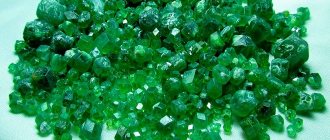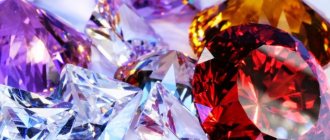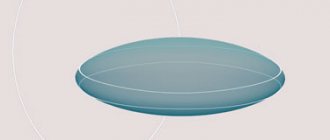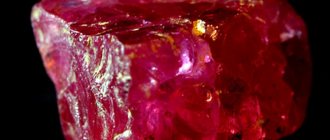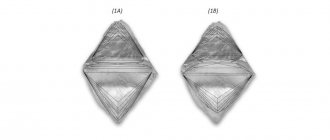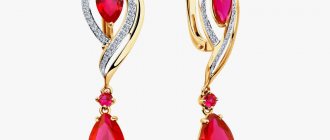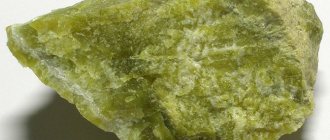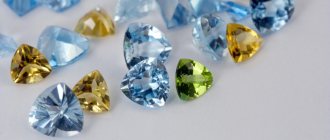Jewelry stones and gems are valued for their transparency, ability to refract light, or for their beautiful colors and intricate patterns in the case of opaque minerals. However, looking at samples extracted from the rock, it is difficult to see the beauty hidden inside. To show and emphasize the advantages of gems, the mined raw materials are subjected to additional grinding, polishing or cutting. It is stone processing that allows you to reveal the best properties of natural raw materials and increase their value.
What is stone refining
Natural minerals with high levels of transparency and rich color are very rare. Most of the mined raw materials have minor defects, uneven or pale color. To improve the quality and characteristics of jewelry stones, methods for refining them have been developed. Unlike natural gems, refined samples are cheaper. Moreover, the accompanying documents must indicate whether the mineral has been refined.
Refining is the processing of already cut crystals or natural untreated stone
It consists of a targeted physical and chemical effect on raw materials, as a result of which it is possible to achieve an increase in the key consumer qualities of minerals.
For example, jewelers have noticed that by heating clear or lightly colored amethyst crystals, which have a low market value, they can produce sought-after yellow stones that resemble citrines. Minerals with zonal coloring, called ametrines, have become popular: when amethyst is heated from just one side, the resulting crystal is yellow at one end and purple at the other.
The main methods of refining stones that are accepted in the jewelry industry and are considered acceptable:
- Annealing (heat treatment). As a result of exposure to high temperatures, many minerals acquire a more saturated color. This method is also used to remove unwanted tints (such as blue in rubies) or inclusions (such as rutile in sapphires).
- Oil treatment - used in cases where it is necessary to hide cracks. The refining process consists of injecting oil with a similar refractive index into the split, from which air and water have been pumped out. As a result, the cracks become almost invisible.
- Treatment with epoxy resin , like oiling, improves the transparency of samples and increases their strength.
- Radioactive irradiation is the main method for producing naturally occurring blue topazes, colored diamonds and quartz. Depending on the type of mineral, X-ray, ultraviolet, gamma radiation or exposure to a flow of energetic particles (neutrons, protons, electrons or alpha particles) is used.
- Coating allows you to obtain crystals with an unusual color, for example, after applying a thin film of precious metals to the surface of topaz, you get mystic topaz, characterized by iridescent tints.
How to care for jewelry - wooden, stone, silver
Jewelry has become an important attribute in the image of a modern woman. Necklaces and necklaces, beads, pendants, bracelets, earrings - all this wealth fills the endless boxes, boxes and cosmetic bags of a real fashionista. To ensure that your favorite accessories do not lose their original appearance, they need proper care.
In this article we will tell you about the basic rules for caring and storing wooden jewelry, as well as products made from natural stone and silver.
How to care for wooden jewelry
Let’s immediately dispel the myth that wooden jewelry is short-lived and quickly loses its visual appeal. With proper storage and basic care, the tree will serve you for many years.
Basic rules for careful storage of wooden jewelry
- Do not expose jewelry to mechanical stress. Try not to drop your wooden beads and bracelets on hard floors, especially concrete and tile floors. Dents or cracks will appear on the parts, decorative elements may fall out, which, you see, at best will not add attractiveness to the product, and at worst, serious damage may not be subject to further restoration.
- Store accessories separately from scratchy metal objects (tweezers, scissors, pendants with sharp edges). They can also cause damage;
- Avoid prolonged exposure to direct sunlight.
This will dry out the wood and it may change color or crack. The same applies to heating devices (central heating radiators, oil radiators). Even if your favorite beads or earrings get wet, do not dry them this way. It is better to dry the wood naturally, in a well-ventilated area. If your house is very hot and dry, put them in a box with a lid and put them in a dark corner; - Wooden jewelry does not withstand the effects of household chemicals and alcohol-containing liquids.
If you use products for styling and fixing your hair, as well as eau de toilette or perfume, take off your accessories, or better yet, put them on last, when your look is completely completed. Wood-destroying substances also include bleaches, filler for gel and ballpoint pens, felt-tip pens, markers, and medicinal alcohol solutions.
To understand the principle of care, you need to know the main ways manufacturers protect their products.
- Coating wooden parts with clear varnish
- Wax protection
With the first method, the strength of the product and its shine increase, with the second, the jewelry retains its natural texture and looks more natural.
Typically, souvenirs and jewelry made of ebony or mahogany are treated with wax. These breeds are very expensive, and it is extremely rare to find products made from them in Russia.
We used to call cherry wood mahogany, and black the dark brown color of some tree species, such as oak.
Under the influence of time and sunlight, beads can change their color - varnished beads, as a rule, become lighter (due to the destruction of the varnish layer), while those treated with wax, on the contrary, darken (due to oxidation processes).
How to properly update your appearance
To make your jewelry look attractive longer, periodically pamper your favorite earrings, necklaces and bracelets made of wood with caring treatments. The tarnished product is rubbed with a dry soft cloth or treated with natural oils. Olive or flaxseed will do.
You need to apply the oil to the surface, leave for 30-40 minutes, and then wipe with a terry towel or any other cotton cloth. Make sure that parts are not cleaned with abrasive agents.
If the decoration has carvings, accumulated dust can be easily removed with a regular paint (or blush) brush.
Caring for jewelry made from natural stones
There are a great many varieties of stone from which jewelry is made. All of them are divided into three categories:
- Jewelry (precious);
- Jewelry and ornaments;
- Ornamental.
Each category includes a specific list of minerals, which, in turn, are divided into classes. We will not go into detail into the classification of this natural material, but will consider the general rules for caring for jewelry made from natural stone, and also focus on several of the most common types.
Let's start with the fact that stones have different chemical compositions and physical properties, which means that some are very hard and are used to cut softer rocks (for example, diamond), while others have a more porous structure, therefore, numerous environmental factors the environment affects them many times more.
Therefore, the first rule will be to store jewelry separately. The ideal way is to have a personal velvet or fabric bag for each accessory. This will prevent softer minerals from being damaged by harder ones.
Most of the dirt accumulates in the places where the stone is inlaid and in the fasteners. You can remove everything unnecessary using a regular cotton swab dipped in warm water. Do not try to clean jewelry with sharp metal objects; you may scratch the mineral or damage the fastenings. It is better to use special products that are sold in jewelry stores for certain categories of minerals. The assortment is quite wide - foams, napkins, solutions.
The most difficult ones to care for are natural stones of organic origin: amber, pearls, turquoise, opal.
Let's look at them in a little more detail.
- Amber is a soft and delicate stone; caring for it requires special care.
It is extremely sensitive to chemicals and alcohol solutions, so do not wash dishes, do not clean items containing amber, and also make sure that drops of perfume or hairspray do not come into contact with it. Under the influence of all these substances, a white coating appears on the surface of amber, which is almost impossible to remove. Protect this fragile mineral from severe temperature changes and prolonged exposure to direct sunlight; - Pearls love moisture very much. With constant dry air, high temperatures and exposure to sunlight, it dries out and cracks. Also be careful with cosmetics and perfumes. Avoid getting them on the pearl beads. It is advisable to store a string of pearls in the shade, separately from other jewelry, wrapped in a soft cloth;
- Turquoise is a stone that tends to lose its color.
This happens due to the porous structure of the rock, which absorbs any evaporation of fats and oils. Avoid contact with turquoise jewelry with soap solution, creams and other cosmetics; - Opal is also a porous rock that does not like sudden changes in humidity and temperature. It may crack and lose its color and shine. Protect opal from mechanical stress and cleaning with abrasives. Treatment with glycerin will be beneficial for this stone.
When buying a piece of natural stone jewelry you like, ask the seller about the rules for caring for this particular mineral.
Caring for silver at home
Our parents cleaned silver items with tooth powder or soda. The immediate effect, of course, was noticeable, they brightened, but still, you should not rub silver with abrasive substances. This method destroys the polish, which is so necessary so that the jewelry does not lose its shine.
So that silver does not darken
- Do not store it in areas with high humidity (bathrooms, kitchens);
- Do not clean with chemicals;
- When preparing food, avoid metal contact with foods containing hydrogen sulfide (for example, eggs)
Also, the reason for the darkening of a silver item can be the illness of the person who wears it.
If the silver does turn black, there are several simple and effective ways to clean it.
Types of stone processing
Refining stones is just one of the stages of processing gems, which is not mandatory. Before falling into the hands of a jeweler and becoming part of a piece of jewelry, all jewelry stones go through a mandatory processing process. Its methods are selected depending on the basic physical and chemical properties of the mineral: transparency, hardness, presence or absence of a pattern.
Modern processing includes the following methods:
- Rock cutting is carried out on machines equipped with band, circular or cable saws. As an alternative to industrial sawing of mined rock, a laser is used for this purpose.
- Peeling - giving raw materials a preliminary shape.
- Grinding is an intermediate step that allows you to obtain a uniform surface roughness of the stone and better evaluate its shape.
- Polishing - reveals the pattern and structure of the mineral, for which grinding wheels are used with a coating of grinding powders.
- Cutting , together with previous methods, is an integral part of the processing of transparent precious stones, as a result of which it is possible to fully reveal the brilliance and light refraction of minerals.
- Polishing is the final stage, as a result of which the surface of the stone acquires a mirror shine.
- Engraving is a decorative processing option that consists of applying a design to a surface.
Chapter IV. Methods and techniques for processing jewelry stones
Jewelry stones in nature are often found in the form of beautiful crystals and amazingly beautiful specimens, distinguished by their strong shine and natural play of light. However, already in ancient times, man learned to enhance the beauty, brilliance and radiance of stones through their additional processing. The dignity and beauty of a jewelry stone are especially clearly manifested after its processing - “...after the fusion of the stone with skill...”, in the figurative expression of A. E. Fersman.Colored stones began to be processed a very long time ago. Jewelry made of lapis lazuli, jasper, turquoise and other stones in the form of polished and rounded plates were found during excavations of ancient burials in many countries. Cylinder seals and amulets with drawings and signs were made from stones. The technique of processing colored stones was initially very simple: the desired shape was given by treating the stones with fine quartz (Thebes) sand or pumice sand (spongy stone) on a fixed stone slab, and then drawings or inscriptions were applied to them with harder minerals. In 2000 - 1800 BC e. processing colored stones has become more complicated. They began to carve complex seals and animal figures from them. The Cretan-Mycenaean period is characterized by various ornaments. In the 1st millennium BC. e. gems appeared with images of animals, and later of mythical heroes and gods. They were cut out with small diamond curling irons inserted into iron holders. For the manufacture of gems, stones of the quartz group were first used - onyx, carnelian, prazem, jasper, agate, amethyst, etc. Later (in the 6th - 5th centuries BC) harder stones began to be used - beryl, emerald, topaz, hyacinth, garnet, etc. and softer ones - obsidian, jade, lapis lazuli, turquoise, etc.
In the Middle Ages, jewelry stones were processed according to certain rules. Theophilus’s work “Description of Various Arts” describes a technique for processing jewelry stones. In accordance with it, rock crystal was sawed with special iron saws, adding wet fine quartz sand. Grains of sand, picked up by the toothed surface of the saw, scratched the stone being sawed with sharp edges, as a result of which a cut gradually formed in it. The sawn-off part of the stone was glued to a wooden holder, then the stone was ground, first on a stationary slab of coarse-grained sandstone, and then on a finer-grained sandstone. The stone was polished in a circular motion on a slab, the surface of which was continuously wetted with water. By gradually changing the angle of inclination of the holder, a rounded surface of the stone was obtained, similar to a modern cabochon. The surface of rock crystal products was polished on a lead plate covered with moistened crushed brick. When polishing harder stones (beryls, emeralds, rubies, sapphires, etc.), a fine powder of crushed rock crystal was used.
Even in ancient times in India it was known that polishing the edges of a diamond crystal can improve its shine and appearance. Thus, the simplest cut appeared - “octahedron”; To obtain a more complex shape, one top of the crystal was ground down to form a flat area, and then the natural edges of the diamond were ground and polished. This form of cutting was also common in Europe until the beginning of the 14th century.
In the XIII - XIV centuries. In Europe, so-called grinding mills appeared, in which large stone grinding discs were rotated using a water drive for stone processing, as well as small hand-driven mills. Very often they used mills in which grinding stones rotated in a vertical plane. At the same time, the cutter polished the stone while lying down, leaning his chest and shoulders on a special device.
The main centers for cutting precious stones in the Middle Ages were Paris, Freiburg, Idar-Oberstein and Prague. G.V. Bank [6] writes that in 1290 a craft workshop of stone grinders was formed in Paris, and in 1327 grinding mills began to operate in Freiburg. In Prague, the art of grinding developed in 1346 - 1378. Reports of the first agate mills in Idar-Oberstein date back to 1454.
In 1456, diamond powder began to be used to polish diamonds, which served as an impetus for the further development of the art of processing precious stones. It was at this time that the court jeweler of the Duke of Burgundy, Ludwig van Berkem, first proposed cutting a diamond in the shape of a “rose”. To obtain diamond powder, Burkem fixed two diamonds in special cement and rubbed them against each other; The powder was applied to a metal disk that rotated in a special diamond cutting machine. A rose-shaped diamond has a flat base, and on the top there are 12, 24 or 32 facets that meet in the center, at the apex. Diamonds with 12 facets were called "Roses d'Anvers", and those with more facets were called "crowned roses".
Large centers for cutting diamonds and supplying polished diamonds in the 15th - 16th centuries. were Paris and Antwerp, and from the middle of the 17th century. - Antwerp and Amsterdam.
Around 1600, the full brilliant cut diamond was developed in Paris and, with some modifications, has survived to this day. This cut creates optimal conditions for total internal reflection and dispersion of light in the diamond. At first, the simplest form of diamond cut was used, in which there were eight facets on the top and bottom of the diamond. Jewelers called this cut ordinary or simple. Now small diamonds are cut this way, producing diamonds weighing from 0.03 to 0.01 carats. Later, more complex shapes of diamonds were developed - 16 facets were made on both parts, or 32 facets in the upper parts and 24 in the lower parts. Such cuts were respectively called double and triple (full). Currently, diamonds are given the following shapes: “marquise”, “pandelok”, oval, pear-shaped, “briolette”, angular, “emerald”, “square”, etc., as well as classical forms (Fig. 1, 2).
Rice. 1. Evolution of diamond cutting: a - octahedron; b - old ordinary; c - 'Mazarin'; g - 'Peruzzi'; d - Dutch rose; e - Antwerp rose
In a diamond cut, the top of the stone is called the crown or top, the bottom is called the bottom or pavilion, the flat is called the table or platform, and the line separating the crown from the pavilion is the girdle. The edges of the pavilion converge at one point - a spike. Previously, instead of a tenon, they made a small platform - a culet.
Rice. 2. Fancy cut shapes: a - pear-shaped; b - oval; in - 'marquis'
In 1938, M. Tolkovsky calculated the “ideal” shape of a diamond cut (Fig. 3). The top part of the diamond has a height of 0.144 times the diameter of the stone ( D
), the diameter of the platform is 0.53
D
, the angle of inclination of the main faces is 40.75°.
The overall height of the diamond is 0.6 D
, and the height of the girdle is 0.01 -
0.02 D.
Rice. 3. Diamond by M. Tolkovsky
In the USSR, practical diamond cutting is most often used, which allows for the most rational use of rough diamonds. Site size 50 - 65% of D
, girdle height 2 - 5%
D
, inclination angle of the crown edges 30 - 40°, inclination angle of the pavilion edges 38 - 42°. In Germany, three types of practical cutting are used. In table 2 shows the main parameters of some cuts.
Table 2. Characteristics of practical types of cuts used in Germany, and the 'ideal' cut of M. Tolkovsky
The play of a diamond is influenced by the size and number of facets. Large stones are made with a large number of faces, small ones with fewer. Generally, diamonds weighing less than 0.03 ct
have 17 facets, stones weighing 0.03 - 0.05
carats
, 33 facets (Swiss cut).
However, most often, diamonds weighing more than 0.03 carats
have 57 facets: 33 in the upper part, 24 in the lower part (Fig. 4).
Rice. 4. Modern forms of cutting: a - simple (17 facets); b - Swiss (33); c — full (57); d — Highlightcut (73); d - royal (86)
In recent years, foreign companies have developed new, more complex forms of cutting large diamonds, which significantly enhance their performance. So, for stones weighing more than 1 carat
The proposed Highlight Cut cut into 73 bevels (top 41, bottom 32). For larger diamonds, a “royal” cut with 86 facets (49 at the top and 37 at the bottom) is used, as well as a “majestic” cut with 102 facets (61 at the top and 41 at the bottom). Sometimes a spiral cut is performed.
The shape of diamonds can be different, but most often it is round. For large crystals, the following shapes are used: marquise, pear-shaped, oval, baguette, emerald, etc. When cutting precious stones, the optimal angles of the pavilion edges are of decisive importance. If they are not optimal, then most of the rays will pass through the stone without being reflected from the lower edges, and the shine of the stone will be dull and the color will be pale. The more rays of light come out of the stone, the more it shines and sparkles. The refractive index of different colored stones is different. Each stone has its own critical angles of inclination of the bottom faces, which are determined by the ratio (Fig. 5),
n=sin i/sin r, (1)
where i
- angle of incidence of the light beam on the surface of the stone;
r
is the angle of refraction of a ray of light in a stone.
When the light beam AB
falls from the stone into the air, the angles of incidence and refraction can change places: the angle of incidence
r
, the angle of refraction 1 becomes larger. As a result, formula (1) takes the form
sin r1 / sin i1=1/n.
r increases
1, the direction of the ray emerging from the crystal approaches (with increasing
i
1) the direction of the stone surface and, at a certain value, merges with it.
In this case, angle i
will be equal to 90°, and sin i=1. Then formula (2) can be written as follows:
sin r1=sin θ=1/n.
From this point on, with a further increase in angle r
a ray of light will not be able to escape from the stone and will be reflected from its surface. The angle θ is called the angle of total internal reflection or critical angle. Of the colored jewelry stones, diamond has the smallest critical angle (24°5′), and quartz has the largest - 40°3′. The smaller the angle 0θ, the larger the range of angles at which the phenomenon of total internal reflection occurs. For diamond this angle range is between 24°8′ and 90°-65°2′, but for quartz this angle range is only 49°7′.
Rice. 5. The course of rays in stone: a - refraction; b - total internal reflection
In order not to make calculations every time, use the nomogram of B.V. Vitkovsky (Fig. 6). Fan-shaped diverging radii on it correspond to the angles of incidence of light rays in the air on the surface of the stone, vertical lines - the angle of refraction of light rays in the stone, concentric circles - the refractive index of the stone.
Rice. 6. Nomogram of B.V. Vitkovsky
A ray of light is completely reflected from the edges of the bottom if it falls at an angle not less than the critical one for a given stone - this is the lower limit of the angle of inclination of the edges of the pavilion. The upper limit of the angle of inclination of the pavilion faces is determined by the difference between 180° and the critical angle, divided by three (Table 3).
Table 3. Refractive indices, critical angles and limits of inclination angles of the faces of the pavilion of jewelry stones [3]
When cutting, jewelry stones are given different shapes. Historically, certain forms of cutting jewelry stones have developed. The round brilliant cut is most often used when processing diamond, rock crystal, zircon, tourmaline, topaz, and less commonly emerald and ruby. Garnets, flattened diamonds and some dark, slightly translucent stones are cut with a single or double rose. Step cuts in the shape of a square, rectangle or diamond are used when processing transparent colored stones: beryl, emerald, hyacinth, sapphire, ruby and garnet. Cabochon cutting is used for opaque stones: turquoise, moonstone, jasper, malachite, lapis lazuli, etc.; emeralds, sapphires and rubies of reduced quality are also processed. Wedge cutting is used when processing lapis lazuli, agate, jasper, etc.
The processing of any jewelry stone includes a number of operations: preliminary inspection and marking; sawing or splitting; peeling (shaping); cut. Let's take a closer look at them.
Preliminary inspection of the stone
is carried out to select the most optimal method of processing it, taking into account defects, uneven coloring, possible cut shape, etc.
Marking
colored stones are cut in such a way that the underside of the cut stone is the most densely colored. Sawing or splitting lines are marked with a rapidograph; At the same time, it is necessary to take into account how best to remove defects in the stone during the cutting process. The operation of marking the stone is a very responsible one. It requires a lot of experience and knowledge of the characteristics of the stone - its properties, crystallographic structure, etc. It is this process that ensures the production of a stone with the best color and quality characteristics.
Sawing
or by splitting, jewelry stones are separated into pieces suitable for subsequent processing. Splitting is currently used less often than sawing, mainly when processing diamonds with distorted shapes or diamonds with defects that can be eliminated by splitting. The diamond is fixed with special cement on a mandrel, a mark (line) is applied to the edge of the crystal using a diamond fragment, and then a part of the diamond is broken off using a special knife inserted into the mark.
Diamonds are sawed along certain planes that do not correspond to the splitting directions. These planes are located parallel to the faces of the cube or rhombic dodecahedron. Diamonds are sawed on a special machine with thin disks of tin-phosphorus bronze, coated with diamond micropowder ( Fig. 13
).
The diameter of the discs is 76 mm
, thickness from 0.04 to 0.09
mm
depending on the size of the crystal being cut.
The technological process of sawing begins with sticking the marked crystals with a special mass consisting of medical plaster and glue in a 1:1 ratio. Then the crystal is oriented to align the plane of the marking line with the plane of the sawing disk. This is done visually or using an MBS-2 microscope equipped with a special device. After this, the crystal is cut to a depth of 1 - 1.5 mm
and sawed.
The load on a diamond when sawing is, according to V.I. Epifanov, A.Ya. Pesina and L.V. Zykov, from 120 to 300 g
depending on the mass of the crystal (from 0.1 to 5
ct
and above) and thickness disk (from 0.05 to 0.08
mm
).
Currently, semi-automatic machines are widely used for cutting diamonds. Colored jewelry stones are cut on special machines using thin diamond discs with a rotation speed of up to 8000 min
-1.
Water must be used to cool the stone. The stone is secured in a clamp and manually fed towards the movement of the rotating disk. Typically, for sawing colored stones, diamond discs of the AOK type with a diameter of 100 mm
(AOK 100 × 0.3 × 5 × 20) with a diamond grain size of 160/125
microns
and a diamond weight of about 0.5
carats
.
Rice. 13. Sawing a diamond
Rip off
performed to give the processed stone a preliminary shape.
Peeling is done manually with a diamond cutter fixed in a holder. The diamond is given a round or other shape, sharp edges and edges are smoothed. Typically, the size of the stone used to peel matches the size of the stone being peeled. Stones are also peeled on special machines using a diamond-reinforced wheel. The stone rotates with a frequency of 100 - 700 min
-1, and the diamond disk - with a frequency of 3000
min
-1.
Disc diameter 250 mm
, diamond grain size 125/100
microns
, diamond weight 300
carats
. The stone being processed is glued with a special mastic to the end of the mandrel, which is inserted into the appropriate device on the machine. Treat the stone in a stream of water. To obtain blanks of complex shapes (oval, pear-shaped, “marquise”), the stone is processed with a special copier.
The stone cutting process includes two stages: grinding, the task of which is to remove the bulk of the mineral, applying certain shaped edges to the surface of the stone being processed, and polishing.
Grinding Operations
and
polishing
of jewelry stones are the most important and most labor-intensive.
Stones are polished on special machines equipped with a rotating cutting disc. When grinding diamonds, cast iron discs are used, coated with diamond micropowder with a grain size of 5 - 7 microns
.
Disc rotation speed - up to 4000 min
-1. The diamond is fixed in the “Crystal” device, which makes it possible to rotate the stone to the required angle. First, the upper platform is ground and polished, then the position of the stone is changed and the lower part of the stone is processed; Moreover, first the four main faces are ground at an angle of 40 - 42° to the girdle plane, and then the four corner faces and wedges on the bottom edges. After processing the lower part of the stone, the upper part of the diamond is ground and polished. In the mass production of diamonds, a step-by-step cutting method is used, i.e., each worker specializes in cutting certain facets.
Cutting, grinding and polishing of colored stones is carried out on machines of type 0126-A, providing a rotation speed of up to 2500 min
-1.
Stones are processed on a diamond wheel of type A1-PV with a diameter of 140 mm
.
The stone is riveted with mastic to a holder, which is fixed in a quadrant with an angular cone and a graduated washer. First, the platform is polished, then the edges of the bottom of the stone and the top part. For grinding, diamond wheels with a diamond grain size of 60/40 microns
, which are constantly washed with water, and for polishing, wheels reinforced with diamonds with a grain size of 7/5
microns
are used and cooled with spindle oil. Some stones are polished on tin or lead discs using chromium oxide, tripoli and other “soft” abrasives.
Stones that are opaque or have significant defects are cut into cabochons. This can be done manually, gradually changing the angle of the holder. The height of the correct cabochon should be equal to the radius of the stone. If the height is greater, then the cabochon is of the high type, and if it is less, the cabochon is of the flat type. To enhance the transparency of the stones, a concave platform is sometimes made. There are convex cabochons, as well as mixed-cut stones. In recent years, stone processing has been carried out on automatic machines. After manufacturing, the stone is separated from the holder, washed in an ultrasonic bath and dried. Diamonds are boiled in sulfuric acid with the addition of potassium nitrate in a ratio of 10:1 at a temperature of 150 - 160°C. Then they are washed in distilled boiling water, washed with alcohol and dried. Next, the stones are assessed by weight, shape, color, depravity groups in accordance with the technical conditions and packaged in paper bags on which the name of the stone, their quantity, total weight, price per 1 carat
.
Diamonds
by shape they are divided into round (17, 33 or 57 edges), “marquise” (55 edges), pear-shaped (56 edges), “emerald” (57 edges), “trapezoidal baguette” and “rectangular baguette” (25 edges), oval (57 faces), angular (57 faces), square (25 faces), triangular (19, 31 and 37 faces), hexagonal (37 faces), octagonal (49 faces).
By weight, diamonds are divided into three groups: small (up to 0.29 carats
inclusive), medium (from 0.3 to 0.99
carats
) and large (more than 1
carat
).
The technical conditions provide for the classification of diamonds by defectiveness groups. Small diamonds with 17 or 33 facets are divided into five defective groups, those with 57 facets into eight, and medium and round diamonds into eleven.
The color of diamonds is determined in accordance with GOST 9363 - 60. For arbitrary determination of color, reference samples of diamonds are established. Depending on the color and color intensity, diamonds are divided into groups: small ones with 17 and 33 facets - into four, small ones with 57 facets - into seven, medium and large - into nine. Diamonds with a unique color (blue, pink, emerald green, etc.) belong to color group I. Diamonds of the last defective groups, regardless of their color, are classified as the last color groups.
Emeralds
are divided into two categories: faceted emeralds and cabochons. Based on color, processed emeralds are divided into five groups: dark green, normal green, medium green, light green, and with a greenish tint (light). Based on quality, faceted emeralds are divided into three, and cabochons into two groups.
When cutting, emeralds are given the predominantly “emerald” shape, but other shapes are also acceptable (Fig. 7). Emeralds weighing up to 0.1 carat
They are cut only in a square shape (square).
Rice. 7. Shapes of emerald cutting: a - square; b - rectangular: c - emerald
Sapphires
By color they are divided into two groups: normal blue and light blue. They can be cut in different shapes; they are also processed in the form of cabochons. According to the degree of defectiveness, sapphires are divided into two groups.
Rubies
By color they are divided into two groups: bright red and normal red. Based on their defectiveness, they are also divided into two groups. According to the OST requirements for faceted semi-precious stones in the USSR, the surface of the facets of a faceted stone must be mirror-shiny: unpolished areas, holes, streaks, scratches visible to the naked eye, chips on the faces, edges and along the girdle are unacceptable; the edges must be smooth and clearly delimit the edge. The edges of adjacent faces must converge at one point, and the pad must be perpendicular to the axis passing through the top of the insert.
Ornamental colored stones from which inserts are made, in accordance with OST, are divided into four groups: Group I - dolomite, serpentine, listvenite, marble onyx, ophiocalcite, rhodusite, khibinite; Group II - belomorite, jaspilite, cacholong, rose quartz, decorative flint, obsidian, graphic pegmatite, hornstone, jasper; Group III - overflow agate, amazonite, iridescent labradorite, rhodonite, colored chalcedony; Group IV - agate, ornamental lapis lazuli, jade, carnelian, pale green jadeite, gray jadeite with green veins, pale green chrysoprase1. The most valuable stones are group IV, the least valuable are group I.
1 (Charoite belongs to group IV
)
Inserts made of rare expensive colored stones are distinguished separately by type: amethyst brushes; turquoise is bright blue and greenish blue; turquoise is pale blue and greenish blue; jadeite green and bright green; lapis lazuli for jewelry; chrysoprase green and bright green.
The dimension of inserts made of ornamental colored stones is determined by the total value obtained from the addition of two mutually perpendicular linear axial dimensions of the plane of the base of the insert. On the front surface of the inserts, chips and cavities, cracks that threaten the integrity of the stone, and faded, inexpressive coloring are not allowed. The front surface of the stone should be mirror-shiny, evenly polished, without scratches or traces of processing visible to the naked eye.
Home processing tool
Processing natural jewelry or semi-precious stone at home may include cutting, polishing, engraving and grinding of gems. All actions should be carried out only with a continuous supply of water, which removes stone dust and cools the surface of the stone and tools.
Depending on the type of impact, the following tools will be required:
- continuous water supply system - you can use a sponge or a dropper;
- a cutting machine or grinder with diamond saws - for sawing hard samples;
- a hacksaw is suitable for soft stones, such as jet or amber;
- vice or clamp - for fastening the sample;
- grinding machine;
- the drill will help in making holes in stone, grinding and polishing, if you choose suitable attachments;
- the engraving set can be used both for drawing and polishing;
- sandpaper with different grain sizes;
- grinding and polishing discs of various textures;
- grinding powders and diamond pastes, for example, goi paste;
- quadrant - a device for measuring and setting angles of inclination, without which it is impossible to apply geometrically correct edges;
- kitch - a rod on which a crystal is attached during polishing or cutting.
Do-it-yourself sawing and stabbing
Processing precious and semi-precious stones is a compromise between two aspirations. On the one hand, it is necessary to maintain the maximum size and weight of the finished product, on the other hand, it is necessary to give it an ideal shape or cut, taking into account the structure and quality of the material. Based on these conditions, specialists involved in stone processing determine the required size and shape of the workpieces.
To split a piece of rock , you can use special devices, for example, a clamp with two teeth made of hardened metal. To split large pieces, you can drill holes or make a notch along the edge of the chip and successively punch the cut line using wedges and a hammer.
To cut rock yourself , you can buy a ready-made machine or assemble your own, for example, based on an electric drilling device, equipping it with a continuous water supply system. As such, you can use a moistened sponge or foam rubber, if you hold it with your left hand while cutting. However, to comply with safety precautions, it is better to use both hands during work, so under the workbench with a homemade machine, you can place a tray with water, which will cool the cutting saw blade.
If there are cracks in the sample that needs to be cut, they need to be sealed with epoxy glue for greater strength. This technology allows you to avoid unwanted splits of the material during the sawing process. Before pouring glue into the cracks, the stone must be heated on an electric stove so that the moisture evaporates. When the mineral has cooled to 60 ℃, you can apply glue, trying to ensure that it penetrates deeper into the fracture. When the glue dries, proceed to cutting.
After the raw materials are cut into pieces, they are sent for peeling, during which the workpieces acquire approximate sizes and shapes. For this purpose, coarse-grained grinding wheels are used.
How to polish to a shine
If the refining of precious stones involves changing their properties, then polishing uses the qualities inherent in the mineral itself and emphasizes its natural advantages.
The main secret to successful polishing at home is a gradual change of abrasives: from larger to smaller ones. At the end of the process, it is better to use soft polishing pastes depending on the type of mineral.
Preparation for polishing
Polishing is the final stage of processing natural stone. After this, the gems can be used as inserts in jewelry and other jewelry.
Before you start polishing the stone yourself, it must be sanded. That is, its surface must first be leveled. This can be done either manually, using sandpaper wrapped around a hard base and moistened with water, or using a special tool.
For grinding, in addition to the machine, you can use a grinder or drill, on which you will need to install special attachments. The polished surface of the stone will be even and smooth, but still without a mirror shine.
To polish a mineral to a shine, you will need laps made of felt, leather or fabric , as well as polishing pastes or moistened fine-grained powders - chromium oxide, diamantine, diamond or tripoli. Materials should be selected depending on the characteristics of the raw materials being processed.
A popular method for polishing stones is felt combined with diamond powder, but it is not suitable for minerals with an irregular structure such as fibrous or grainy. Because they are prone to underpolishing: holes or protrusions often form on their surface. To polish such minerals, it is better to use wood or leather.
How the process works
The final processing of the surface of a jewelry stone takes place in several stages:
- To prepare the polishing surface for work, you need to moisten it with water and a small amount of detergent.
- You need to let the polisher run idle so that the moisture is evenly distributed and the excess is removed.
- Apply diamond powder to the faceplate.
- Moving from the center to the edge, they begin to polish the product, pressing it with force against the surface of the faceplate.
- As the surface dries, friction will increase and more effort will be required to hold the crystal.
- To prevent overheating of the working surface, water should be periodically supplied to it. In order to correctly adjust its feed, it should be borne in mind that the harder the stone, the more pressure and the drier surface of the faceplate it requires to be polished.
- Finally, you need to polish the surface with a soft material, such as felt.
During operation, it should be taken into account that if the grinding machine has the ability to change the rotation speed, then in order to avoid underpolishing of the samples, it is necessary to select indicators within the range of 500–2000 rpm.
Processing stones at home is an interesting hobby that can generate income. Working with precious minerals requires certain skills and knowledge. However, in addition to gems, simpler stones, such as cobblestones or pebbles, are also processed: their surface can be engraved, and beautiful samples can be used in interior or garden design.
How and what to properly clean stones with?
In this article:
- Cleaning dirt from stones
- Cleaning gems from negative energy
Cleaning stones from plaque and dirt, as well as negative energy, is an important step in caring for jewelry. The fact is that stones, like any creatures on earth, love to be looked after. You need to clean your favorite products 1-2 times a month - this will be enough to bring the mineral back to normal and restore not only its shine, but also its strength.
Cleaning dirt from stones
It's no secret that plaque and dirt accumulate on the surface of products. Dust, contact with the human body and other negative factors affect the condition of the jewelry. As a result of active wear, the minerals darken, and to eliminate this defect you just need to clean the jewelry. You can do this in several ways:
- Polishing.
- Cleaning with matches.
- Washing with water.
- Baths with salt.
Polishing is the easiest and most effective way to remove contaminants from the surface of a crystal. Naturally, polishing will not remove stains and cloudiness, but it will help remove dust and dirt from the surface of the mineral that has accumulated on it throughout the day. Polishing the jewelry is easy; suede or cloth is suitable for this. The stone is carefully rubbed with a cloth, as a result of which it begins to shine.
Matches help remove contaminants from the surface of minerals. Such a procedure requires attention and diligence. To do this, simply light matches, then extinguish them and rub the stones. They say that this method helps remove even old contaminants from the surface of the crystals.
Sometimes, in order to remove plaque and dirt from the surface of stones, you just need to wash them. The procedure is carried out using a soap solution and a toothbrush with soft bristles. The mineral is kept under a stream of water for several minutes and thoroughly rubbed with a brush, then polished with suede, velvet or flannel. But it is worth considering that some pebbles cannot be washed; they are afraid of water and can simply dissolve during the cleaning process.
Salt will help remove dirt from the surface of jewelry. To do this, simply immerse jewelry with stones in a salt solution. The solution should be cool or warm, but not hot, since minerals are sensitive to high temperatures. The whole procedure lasts a few minutes; you should not immerse the crystals in the solution for more than half an hour. After finishing the treatment, wipe the jewelry with a dry soft cloth.
When deciding to clean stones, it is worth keeping in mind that there are a number of rules that cannot be broken. The fact is that crystals are afraid of:
- high temperatures;
- aggressive reagents;
- soaking.
Various types of stones are afraid of high temperatures. For this reason, it is not recommended to heat jewelry, boil it, or immerse it in hot water. This will cause the mineral to darken and stains to appear on its surface, which will be difficult to get rid of.
You should not clean gems with reagents - acids and alkalis will harm the gems. They will lose their shine and color, and some substances can decompose the stone into molecules. For this reason, if the crystal needs cleaning, you should not experiment; it is better to give preference to specialized pastes. You can take your jewelry to a jeweler, he will remove dirt and plaque from its surface.
Jewelry inlaid with stones should not be soaked; leaving jewelry in water for a long time will not do them any good. Minerals may fall out or even lose their color. That is why you should not keep products in water or solution for more than 20–30 minutes.
Experts also advise storing jewelry with crystals that are not very hard separately, since other jewelry can damage the stones and scratch their surface. It is possible to correct such a defect, but to do this, the jeweler will have to grind the gem and remove shavings from its surface.
Cleaning gems from negative energy
Energy charging of stones is also considered cleaning, only it is not dirt and plaque that is removed from the minerals, but negative energy. Gems, like a sponge, accumulate bad emotions, for this reason it is worth treating the crystals after every scandal or major quarrel. To ensure that the stone does not stop working and brings good luck to the owner, it is necessary to regularly treat it. In this case, the procedure should be carried out for all gems, even those that were just purchased in the store.
So, how to rid a crystal of negative energy:
- You can charge it with sunlight.
- Clean with salt.
- Treat with fire.
- Energize with herbs.
- Cleanse the mineral with moonlight.
The rays of the sun help rid the crystal of negative energy; to do this, leave the gem under the rays of the sun for several hours. To carry out the procedure, you should choose a suitable place - place the stone on the windowsill so that the sun's rays shine directly on it. The procedure lasts from several hours to several days; it will help charge the crystal with positive energy and cleanse it of negativity. But it is worth keeping in mind that the light of the sun can spoil the stone and change its color once and for all.
Cleaning with salt is carried out in several stages; it comes in two types. To charge a mineral with positive energy, simply immerse it in sea salt. Salt crystals will absorb negative emotions and rid the jewelry not only of negative energy, but also of dirt and plaque. The stone is cleaned for 2-3 hours, all this time it should be in a glass or ceramic container with salt.
There is another way that will help restore the energy of the stone; for this, select glass or ceramic dishes and pour warm, clean water into it. Then sea salt is added to the water. When the water has cooled and the salt has completely dissolved, the jewelry is immersed in the solution; the procedure lasts about 30 minutes. Afterwards, remove the product from the solution and wipe with a dry, clean cloth.
The next type of purification of minerals from negative energy is complex, but effective - the stones are treated with fire. To do this, you should light a candle and learn a prayer. The gem is held over the fire and moved clockwise or counterclockwise, while a prayer must be read. The fire will take away the negativity and make the crystal completely clean. It should be placed on the table, and then put away in a dark place where the decoration will remain for several days.
It is not difficult to charge gems with the energy of herbs; to do this, you need to grind the medicinal herbs and place them in a glass bowl. Then you need to put jewelry in the mixture of herbs. They should be in the herbs for several hours.
They also fumigate with herbs - they are set on fire in a bowl, and then the stones are treated with a stream of smoke. You don't want to light a whole fire that will produce clouds of smoke; a few flowing ribbons of smoke are enough to charge the stone. If the smell bothers you, then add lavender to the bowl; it has a pleasant aroma.
The light of the moon is directly related to the energy of stones. It is used by magicians and sorcerers to make a powerful amulet from one or another gem. It is worth charging the crystals at a certain time; early March is ideal for this.
When the moon enters the Aries phase, the mineral is placed in a special container and a location is chosen. The light of the moon must fall directly on the stone, only in this case it will absorb the energy of this planet. If possible, it is better to leave the gems in the fresh air.
